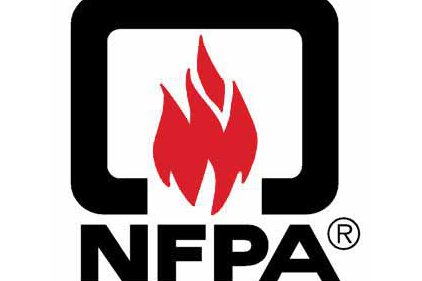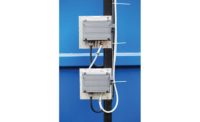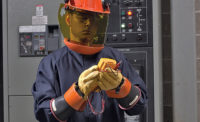The 2015 Edition of 70E's Revision Cycle is not complete and is still in the new process of NFPA’s industry consensus standards updates. Here is how the new process works:
Step 1 – Public Input Stage
- Public Input Closing Date
- First Draft Meeting
- Ballot of First Draft
- First Draft Report
Step 2 – Comment Stage
- Comment Closing Date
- Second Draft Meeting
- Ballot of Second Draft
- Second Draft Report
Step 3 – Notice of Intent to Make a Motion (NITMAM)
- NITMAM Closing Date
- NITMAM Received and Certified
Step 4 – General Association Technical Meeting
Step 5 – Council Appeals and Issuance of New Standard
During the First Draft meeting in August 2012, 448 Public Inputs were reviewed and voted on that were used to generate 173 First Draft revisions. There were also 13 Correlating Committee Notes (CCNs) that came from NFPA and were incorporated into the First Draft revisions.
Then during the Second Draft meeting in June 2013, 250 public comments were used to generate 61 Second Draft Revisions along with 10 CCNs from NFPA.
The following are the highlights of the Second Draft Report for Chapter 1: (NOTE: The underlined items are new or reformatted material.)
Change Table 130.4(C)(a) from "50 V - 300 V" to "50 V - 150 V" and change the next row to "151 V - 750 V" and retain the dc table from the 2012 edition.
Section 110.2 (C) Emergency Response Training.
(1) Contact Release. Employees exposed to shock hazards shall be trained in methods of safe release of victims from contact with exposed energized electrical conductors or circuit parts. Refresher training shall occur annually.
(2) First Aid, Emergency Response, and Resuscitation.
(a) Employees responsible for responding to medical emergencies shall be trained in first aid and emergency procedures.
(b) Employees responsible for responding to medical emergencies shall be trained in cardiopulmonary resuscitation (CPR). Refresher training shall occur annually.
(c) Employees responsible for responding to medical emergencies shall be trained in the use of an automated external defibrillator (AED) if an employer's emergency response plan includes the use of this device. Refresher training shall occur annually.
(3) Training Verification. Employers shall verify at least annually that employee training required by this section is current.
(4) Documentation. The employer shall document that the training required by this section has occurred.
Section 120.2(B)(4) Training Documentation.
(4)Training Documentation.
(a) The employer shall document that each employee has received the training required by this section.
(b) The documentation shall be made when the employee demonstrates proficiency in the work practices involved.
(c) The documentation shall contain the content of the training, each employee's name, and the dates of the training.
Section 130.2 (B)(1) When Required. (NOTE: i.e. When an Energized Electrical Work Permit is Required.
When energized work is permitted in accordance with 130.2(A), an energized electrical work permit shall be required under the following conditions:
(1) When work is performed within the restricted approach boundary
(2) When the employee interacts with the equipment when conductor or circuit parts are not exposed but an increased likelihood of injury from an exposure to an arc flash hazard exists
Section 130.2(B)(3) Exemptions to Work Permit.
An energized electrical work permit shall not be required ... uses appropriate safe work practices and PPE ... under any of the following conditions:
(1) Testing, troubleshooting and voltage measuring
(2) Thermography and visual inspections if the restricted approach boundary is not crossed.
(3) Access to and egress from an area with energized equipment if no electrical work is performed and the restricted approach boundary is not crossed
(4) General housekeeping and miscellaneous non-electrical tasks if the restricted approach boundary is not crossed.
Section 130.5 Arc Flash Risk Assessment.
An arc flash risk assessment shall be performed and shall:
(1) Determine if an arc flash hazard exists. If an arc flash hazard exists, the risk assessment shall determine:
a. Appropriate safety-related work practices
b. The arc flash boundary
c. The PPE to be used within the arc flash boundary
(2) Be updated when a major modification or renovation takes place. It shall be reviewed periodically, at intervals not to exceed five years, to account for changes in the electrical distribution system that could affect the results of the arc flash risk assessment.
(3) Take into consideration the design of the overcurrent protective device and its opening time, including its condition of maintenance.
Informational Note No. 1: Improper or inadequate maintenance can result in increased opening time of the overcurrent protective device, thus increasing the incident energy. Where equipment is not properly installed or maintained, PPE selection based on incident energy analysis or the PPE category method may not provide adequate protection from arc flash hazards.
Informational Note No. 5: See IEEE 1584, Guide for Performing Arc Flash Calculations, for more information regarding arc flash hazards from three-phase systems.
(NOTE: Section 130.5 Arc Flash Risk Assessment continued ...)
(A) Documentation.The results of the arc flash risk assessment shall be documented.
(B) Arc Flash Boundary.
(1) The arc flash boundary shall be the distance at which the incident energy equals 5 J/cm2 (1.2 cal/cm2).
(2) The arc flash boundary shall be permitted to be determined by Table 130.7(C)(15)(A)(b) or Table 130.7(C)(15)(B), when the requirements of these tables apply. (i.e. The new Arc Flash PPE Tables that are replacing the old HRC Task Tables)
(C) Arc Flash PPE. One of the following methods shall be used for the selection of PPE. Either, but not both, methods shall be permitted to be used on the same piece of equipment. The results of an incident energy analysis to specify an arc flash PPE Category in Table 130.7(C)(16) shall not be permitted.
(2) Arc Flash PPE Categories Method. The requirements of 130.7(C)(15) and 130.7(C)(16) shall apply when the arc flash PPE category method is used for the selection of arc flash PPE.
(D) Equipment Labeling. Electrical equipment....shall be field-marked with a label containing all the following information:
(1) Nominal system voltage
(2) Arc flash boundary
(3) At least one of the following:
a. Available incident energy and the corresponding working distance, or the arc flash PPE category in Table 130.7(C)(15)(A)(b) or 130.7(C)(15)(B) for the equipment, but not both
b. Minimum arc rating of clothing
130.7(C)(15) Selection of PPE When Required.
(A) Alternating Current (ac) Equipment. When selected in lieu of the incident energy analysis of 130.5(B)(1). Table 130.7(C)(15)(A)(a) shall be used to identify when arc flash personal protective equipment (PPE) is required. When arc flash PPE is required, Table 130.7(C)(15)(A)(b) shall be used to determine the PPE category.....An incident energy analysis shall be required in accordance with 130.5 for the following:
(1) Tasks not listed in Table 130.7(C)(15)(A)(a)
(2) Power systems with greater than the estimated maximum available short-circuit current
(3) Power systems with longer than the maximum fault clearing times
(4) Tasks with less than the minimum working distance
Table 130.7(C)(15)(A)(a) Arc Flash Arc Flash Hazard Identification for Alternating Current (ac) and Direct Current (dc) Systems (NOTE: This table is an excerpt of the full table, and it is for both ac and dc systems.)
|
|
|
ARC FLASH PPE REQUIRED |
|
Normal operation of a circuit breaker (CB), switch, contactor, or starter |
ALL OF THE FOLLOWING: |
NO |
|
|
ANY OF THE FOLLOWING: |
YES |
Table 130.7(C)(15)(A)(b) Arc-Flash Hazard PPE Categories for Alternating Current (ac) Systems (NOTE: This table is an excerpt of the full table and is for ac systems only.)
|
|
|
|
|
Panelboards or other equipment rated 240 V and below Parameters: Maximum of 25 kA short-circuit current available; maximum of 0.03 sec (2 cycles) fault clearing time; working distance of 455 mm (18 in.) |
1 |
485 mm |
|
Panelboards or other equipment rated > 240 V and up to 600 V Parameters: Maximum of 25 kA short-circuit current available; maximum of 0.03 sec (2 cycles) fault clearing time; working distance of 455 mm (18 in.) |
2 |
900 mm |
Table 130.7(C)(15)(B) Arc-Flash Hazard PPE Categories for Direct Current (dc) Systems
(NOTE: This table is an excerpt of the full table and is for dc systems only.)
|
EQUIPMENT |
ARC FLASH PPE CATEGORY |
ARC-FLASH BOUNDARY |
|
Storage batteries, dc switchboards, |
||
|
Short-circuit current < 4 kA |
1 |
900 mm (3 ft.) |
|
Short-circuit current 4 kA < short-circuit < 7 kA |
2 |
1.2 m (4 ft.) |
|
Short-circuit current 7 kA < short-circuit current <15 kA |
3 |
1.8 m (6 ft.) |
NFPA General Association Technical Meeting
The NITMAMs are being certified by NFPA for the General Association Technical Meeting (June 9-12, 2014) where the second draft and any NITMAMs will be voted on. NITMAMs are the last resort that a submitter of a Public Input has if the submitter disagrees with the Technical Committee’s action on the submitter’s Public Input. The NITMAMs are voted on by the members that are present at the General Association Technical Meeting. It is extremely rare that a NITMAM ever passes. NITMAMs are posted on the NFPA website for public review.
Summary
This is an exciting time to be in the electrical industry with the new process for revising NFPA documents. In the near future, all NFPA industry consensus standards documents will be done electronically online using the new process.
It is also a time that the NFPA 70E – Electrical Safety in the Workplace industry consensus standard is being refined and becoming a more user-friendly document that will help to protect workers from electrical hazards.
The NFPA 70E – Electrical Safety in the Workplace 2015 edition, when it has completed this revision cycle later this year, will be the culmination of the efforts of many dedicated individuals from all sectors of our industry over the past 40 years. It is an industry consensus standard that will help to provide a safer workplace.



